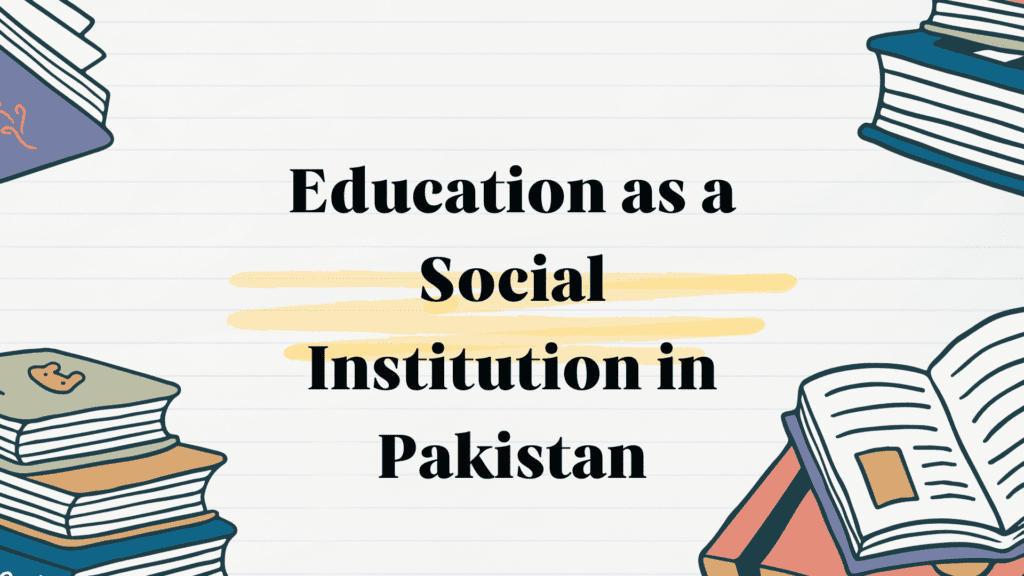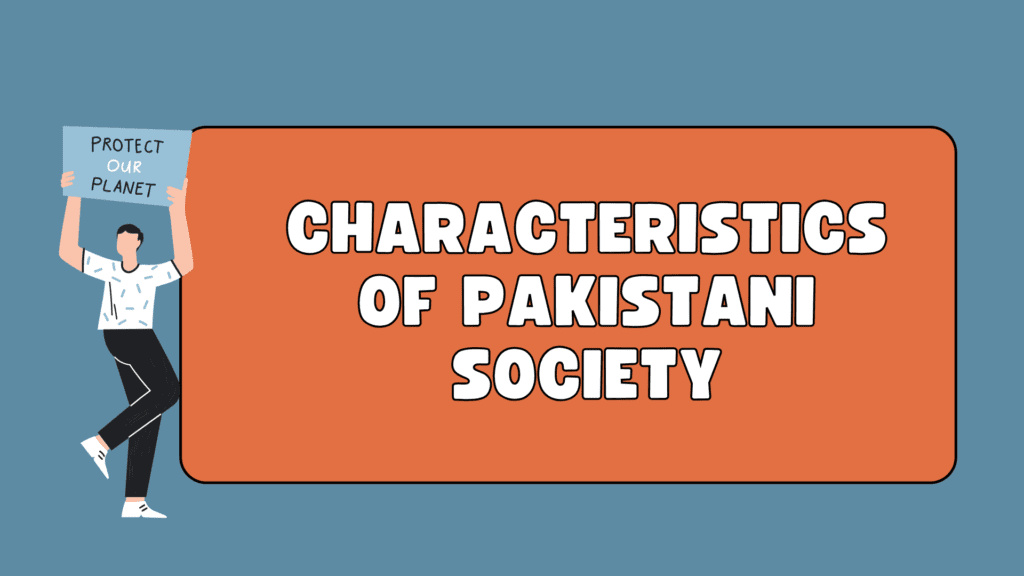Education is a foundational social institution that plays a vital role in shaping individuals and societies. It is the process through which knowledge, values, culture, and skills are transmitted from one generation to the next. In Pakistan, education serves as both a means of personal development and a tool for national progress, but it is also influenced by deep-rooted social, economic, cultural, and political factors.
Functions of Education as a Social Institution
Education in Pakistan, like in other societies, performs several key social functions:
-
Socialization: Schools and colleges teach cultural norms, values, languages, and behavioral expectations.
-
Skill Development: Education equips individuals with the knowledge and abilities needed for employment and economic participation.
-
Social Integration: Through a common curriculum and national language, education aims to promote unity and national identity.
-
Social Mobility: It offers opportunities for individuals from lower socio-economic backgrounds to improve their status.
-
Social Control: It helps regulate behavior through discipline, rules, and structured learning.
Structure of the Educational System in Pakistan
Pakistan’s education system is structured into:
-
Primary (Grades 1–5)
-
Middle (Grades 6–8)
-
Secondary (Grades 9–10)
-
Higher Secondary (Grades 11–12)
-
Tertiary Education (colleges and universities)
There are three main types of schooling:
-
Public Sector Schools – Mostly affordable but often under-resourced.
-
Private Sector Schools – Vary in quality; some are elite and others are low-cost.
-
Religious Schools (Madaris) – Focus on Islamic education, though some are modernizing their curricula.
Education and Social Inequality
Education in Pakistan reflects and often reinforces social inequalities:
-
Class Disparities: Wealthier families access private and international schools, while the poor often rely on underfunded public schools.
-
Gender Gaps: In many rural areas, girls face limited access to education due to poverty, cultural norms, and lack of facilities.
-
Urban-Rural Divide: Urban areas have better infrastructure, teacher availability, and learning outcomes compared to rural districts.
-
Language Barriers: Multiple mediums of instruction (Urdu, English, regional languages) lead to inconsistency and inequality in learning outcomes.
Example: A child in Lahore attending an English-medium private school has far greater access to quality education and career opportunities than a child in rural Balochistan attending a government school with no basic facilities.
Cultural and Religious Influences
Education in Pakistan is influenced by Islamic and cultural values:
-
Islamic Studies is a compulsory subject across all levels.
-
Concepts of morality, respect for elders, patriotism, and religious obligations are emphasized.
-
Cultural traditions sometimes restrict educational access for girls or minorities.
Challenges Facing the Educational System
Despite its importance, Pakistan’s education system faces numerous challenges:
-
Low literacy rate, especially among women and rural populations.
-
Lack of trained teachers and outdated teaching methods.
-
Poor infrastructure in public schools.
-
Political interference in education policies and textbook content.
-
Dropout rates due to poverty, child labor, and early marriages.
Role of Education in Social Change
Despite the challenges, education has the potential to drive social transformation:
-
It promotes critical thinking and civic awareness.
-
Encourages gender equality and empowerment.
-
Strengthens democracy by producing informed citizens.
-
Supports economic development by creating a skilled workforce.
Example: Initiatives like the Ehsaas Education Stipend and Punjab Education Foundation (PEF) aim to promote school attendance among underprivileged children.
Reforms and Future Directions
To make education a more effective social institution in Pakistan, reforms are needed:
-
Curriculum reforms that emphasize skill development, critical thinking, and inclusiveness.
-
Investment in teacher training, school facilities, and digital education.
-
Promoting girls’ education through awareness and incentives.
-
Reducing regional disparities by ensuring equal access in all provinces.
Conclusion
Education as a social institution in Pakistan holds immense potential to uplift society and build a just, equitable, and prosperous nation. However, for it to fulfill this role, the system must address its structural inequalities, improve quality, and ensure access for all — regardless of gender, class, or geography. When education is truly inclusive and empowering, it becomes a force for social integration, progress, and change.


